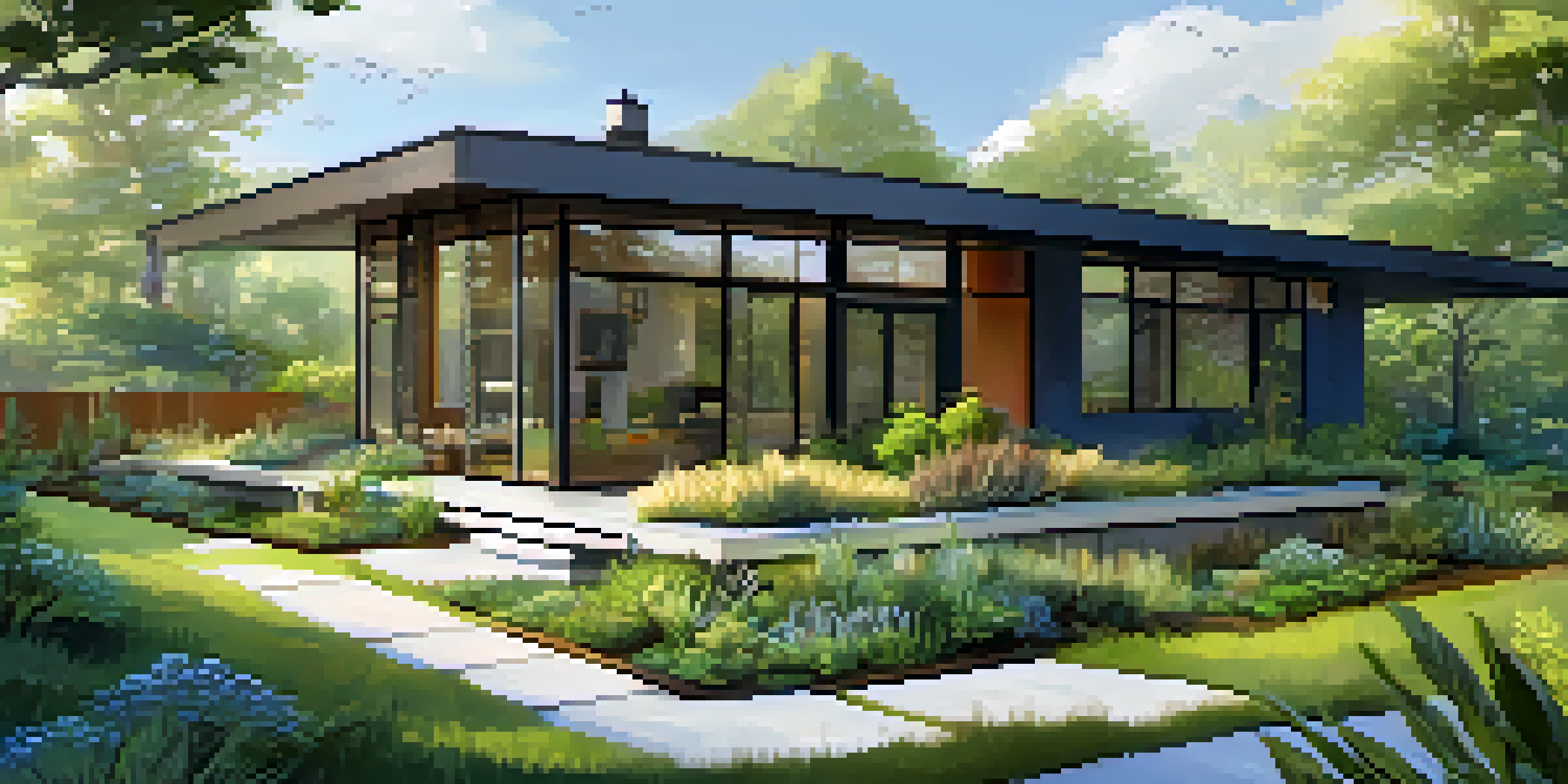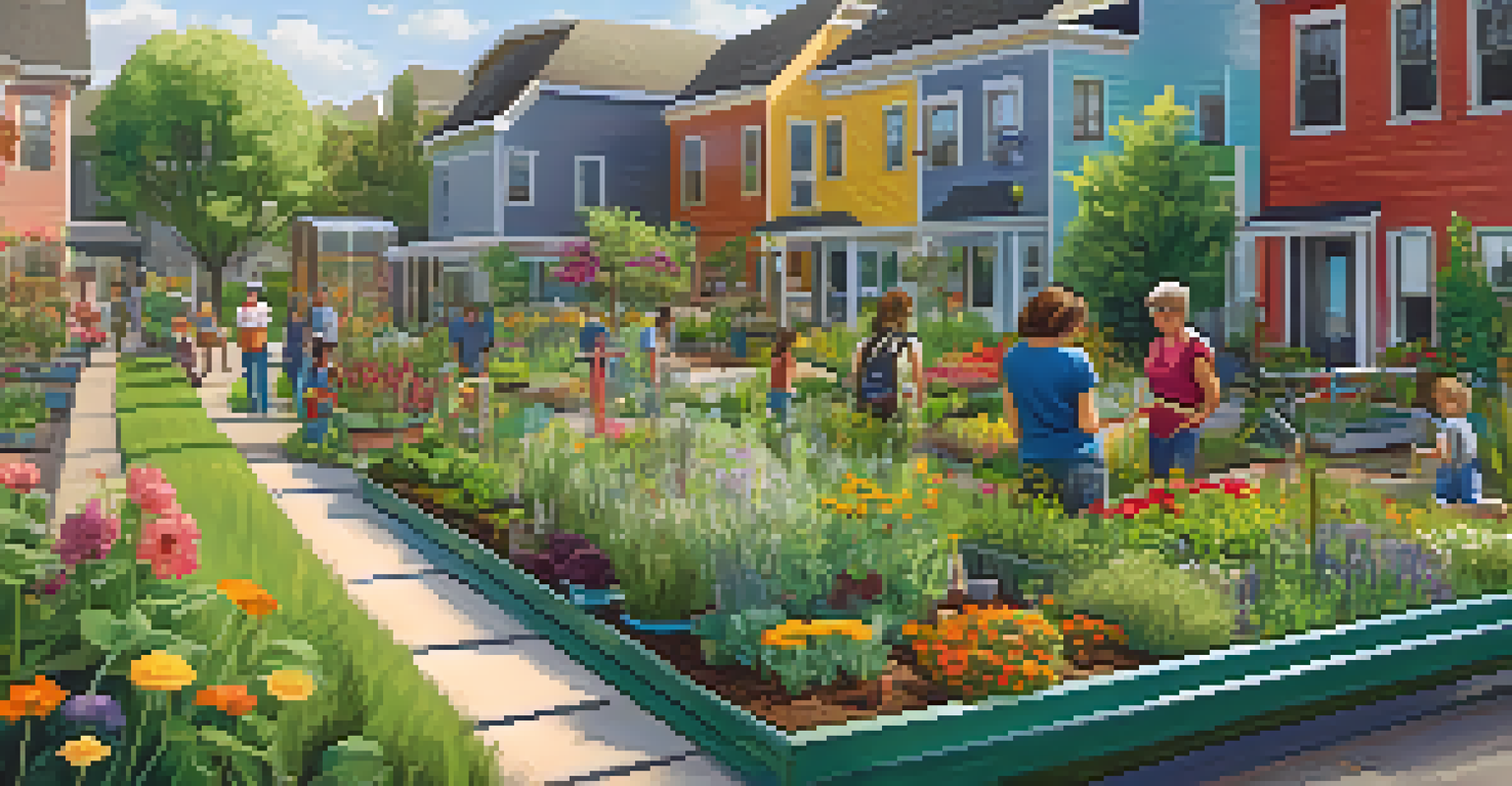The Benefits of Sustainable Home Building Practices

Understanding Sustainable Home Building Practices
Sustainable home building focuses on creating structures that are environmentally friendly and resource-efficient. This involves using materials and methods that minimize waste and reduce energy consumption. By incorporating sustainable practices, homeowners can create spaces that are not only functional but also harmonious with nature.
The greatest threat to our planet is the belief that someone else will save it.
One key aspect of sustainable building is the use of renewable resources. For example, building with bamboo or reclaimed wood can significantly reduce the environmental footprint. Additionally, sustainable practices encourage the use of energy-efficient appliances and systems, which can help lower utility bills over time.
Ultimately, adopting sustainable home building practices contributes to a healthier planet. It promotes the idea that our living spaces should coexist peacefully with the environment, leading to a more sustainable future for generations to come.
Economic Advantages of Sustainable Building
One of the most compelling reasons to consider sustainable home building is its potential for long-term cost savings. While the initial investment may be higher due to eco-friendly materials and technologies, the savings on energy bills can quickly add up. For instance, homes equipped with solar panels often see reduced electricity expenses.

Moreover, sustainable homes tend to have a higher resale value. As more buyers become environmentally conscious, they actively seek out homes that are built with sustainability in mind. This trend can make your property more attractive in a competitive housing market.
Sustainable Homes Save Money
Investing in sustainable building practices can lead to long-term cost savings through reduced energy bills and higher resale values.
Additionally, many governments offer financial incentives for sustainable building practices, such as tax credits or grants. These programs can help offset the costs and make it easier for homeowners to invest in eco-friendly upgrades.
Health Benefits of Sustainable Home Design
Living in a sustainable home can lead to improved health for you and your family. Sustainable building practices often involve using non-toxic materials, which can reduce exposure to harmful chemicals commonly found in traditional building supplies. This is essential for creating a safe living environment.
The best way to predict the future is to create it.
Moreover, many sustainable homes are designed with better ventilation systems. This allows for improved air quality, reducing allergens and indoor pollutants. As a result, residents can enjoy a healthier atmosphere that promotes overall well-being.
Lastly, incorporating natural elements such as green spaces and ample natural light can boost mental health. Studies show that access to nature and sunlight can enhance mood and reduce stress, making sustainable homes not just eco-friendly but also nurturing spaces.
Environmental Impact of Sustainable Building
Sustainable home building plays a crucial role in reducing environmental degradation. By using renewable resources and implementing energy-efficient designs, homeowners can significantly lower their carbon footprint. This is especially important in combating climate change, as buildings contribute a substantial amount of greenhouse gases.
Additionally, sustainable practices promote biodiversity by preserving local ecosystems. For instance, using native plants in landscaping can help maintain local wildlife habitats. This creates a more balanced environment and fosters a connection between humans and nature.
Healthier Living Environments
Sustainable homes often use non-toxic materials and better ventilation, resulting in improved air quality and overall well-being for residents.
Furthermore, sustainable homes typically generate less waste during construction and throughout their lifespan. By prioritizing recycling and responsible disposal methods, builders can minimize the impact on landfills, contributing to a more sustainable future.
The Role of Energy Efficiency in Sustainable Homes
Energy efficiency is at the heart of sustainable home building practices. By utilizing energy-efficient appliances, insulation, and windows, homeowners can significantly reduce their energy consumption. This not only lowers utility bills but also lessens the demand for fossil fuels.
High-efficiency heating and cooling systems, such as geothermal or solar-powered options, can drastically cut energy usage. These technologies allow homes to maintain comfort while being kinder to the environment. As energy prices continue to rise, investing in efficiency becomes even more appealing.
Additionally, energy-efficient homes often qualify for various incentives, making them more affordable. This combination of savings and environmental responsibility makes energy efficiency a cornerstone of sustainable home building.
Sustainable Materials: What to Choose
Choosing sustainable materials is a pivotal step in the home building process. Options like reclaimed wood, recycled steel, and bamboo are not only durable but also have a significantly lower environmental impact. These materials help reduce the demand for new resources and lower overall waste.
Moreover, many sustainable materials have a lower carbon footprint than their conventional counterparts. For instance, using locally sourced materials can cut down on transportation emissions and support local economies. This choice further enhances the sustainability of your home.
Eco-Friendly Materials Matter
Choosing sustainable materials like reclaimed wood and bamboo helps minimize environmental impact while supporting local economies.
It's also essential to consider the life cycle of materials. Selecting products that are durable and require minimal maintenance can lead to long-term savings and less waste. Ultimately, the right materials can make a significant difference in the sustainability of your home.
Community and Social Benefits of Sustainable Building
Sustainable home building goes beyond individual benefits; it fosters a sense of community and social responsibility. By prioritizing eco-friendly practices, homeowners can influence their neighborhoods, encouraging others to join in on sustainable initiatives. This collective effort can lead to more vibrant and resilient communities.
Additionally, sustainable homes often incorporate shared spaces, such as community gardens or recreational areas, which promote social interaction. These spaces can serve as gathering points, helping to build relationships among neighbors. This sense of community can enhance the overall quality of life for residents.

Furthermore, sustainable building practices often prioritize equitable access to housing, ensuring that homes are affordable and accessible to a diverse population. This commitment to inclusivity can create more cohesive and supportive communities, benefiting everyone involved.
The Future of Sustainable Home Building
The future of sustainable home building looks promising as awareness and technology continue to evolve. With advancements in building materials and construction techniques, the potential for eco-friendly homes is greater than ever. Innovations like 3D printing and smart home technology are paving the way for more efficient and sustainable designs.
As more individuals recognize the importance of sustainability, it’s likely that demand for sustainable homes will increase. This shift in consumer preference can lead to more builders adopting green practices, creating a positive feedback loop that benefits the environment.
Ultimately, the future of sustainable home building is not just about constructing eco-friendly homes; it's about fostering a lifestyle that values sustainability. This holistic approach can create a better world for future generations, proving that sustainable living is not just a trend but a necessary evolution.